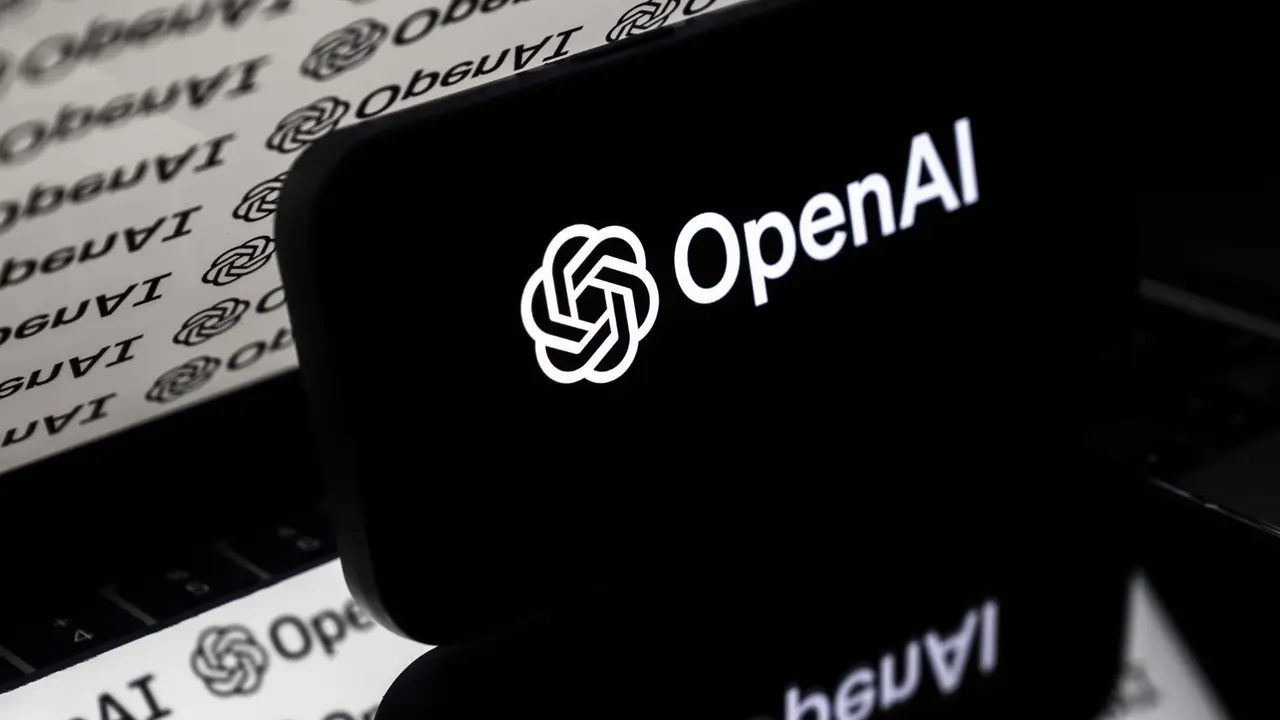Cisco Study Reveals Critical Gaps in Global Cybersecurity Readiness Amid AI Advancements
2 Sources
2 Sources
[1]
Cisco Study Reveals Alarming Deficiencies in European Cybersecurity Readiness
According to Cisco's 2025 Cybersecurity Readiness Index, only 3 percent of organizations in Europe have achieved the 'Mature' level of readiness required to effectively withstand today's cyber threats, as hyperconnectivity and AI introduce new complexities. The European Union has adopted regulatory frameworks that address critical infrastructure security (NIS2) and product security (Cyber Resilience Act, CRA), but progress has been critically held back by inconsistent implementation and irregular roadmaps for compliance. The EU has signaled cybersecurity will be a cornerstone of its regulatory simplification program, which presents a unique opportunity to get this back on track. Cisco's Cybersecurity Readiness Index provides further evidence that 'carrots' are required to go alongside the legislative 'sticks'. AI is revolutionizing security and escalating threat levels, with nearly nine-in-ten organizations (87%) facing AI-related security incidents last year. However, only 42% of European respondents are confident their employees fully understand AI related threats, and 42% believe their teams fully grasp how malicious actors are using AI to execute sophisticated attacks (vs 49% globally). This awareness gap leaves organizations critically exposed. The industry needs to dramatically simplify how enterprises deploy, manage, and secure AI to keep pace with the evolving threat landscape. AI is compounding an already challenging threat landscape. In the last year, nearly half of European organizations (46%) suffered cyberattacks, hindered by complex security frameworks with disparate point solutions. Looking forward, respondents view external threats like malicious actors and state-affiliated groups (58%) as more significant to their organizations than internal threats (42%), underscoring the urgent need for streamlined defense strategies to thwart external attacks. Policy makers need to incentivize the removal of outdated technologies and adoption of modern architecture, including AI-powered defenses. They also need to swiftly boost initiatives to enable a skilled cyber workforce, in partnership with industry. The Index evaluates companies' readiness across five pillars -- Identity Intelligence, Network Resilience, Machine Trustworthiness, Cloud Reinforcement, and AI Fortification. Based on a double-blind survey of close to 2,000 private sector security and business leaders in Europe* (8,000 globally. Companies were then categorized into four readiness stages: Beginner, Formative, Progressive, and Mature. Organizations must simplify their security frameworks, prioritize cybersecurity in their IT budgets, elevate AI threat awareness, address risk from unmanaged devices and shadow AI, and prioritize AI for threat detection, response and recovery. Cybersecurity preparedness remains alarmingly low in Europe as 69% of European respondents (71% globally) anticipate business disruptions from cyber incidents within the next 12 to 24 months. AI is reshaping the world, introducing risks of a magnitude never before encountered -- challenging infrastructures and those who defend it.
[2]
Cisco Study Reveals Alarming Deficiencies in Security Readiness By Investing.com
SAN JOSE, Calif., May 7, 2025 /PRNewswire/ -- According to Cisco's (NASDAQ: CSCO) 2025 Cybersecurity Readiness Index, only 4% of organizations worldwide have achieved the 'Mature' level of readiness required to effectively withstand today's cybersecurity threats. This is a slight increase from last year's Index, in which 3% of organizations worldwide were designated as Mature. This demonstrates that despite a slight improvement from last year, global cybersecurity preparedness remains low as hyperconnectivity and AI introduce new complexities for security practitioners. AI is revolutionizing security and escalating threat levels, with nearly 9 in 10 organizations (86%) facing AI-related security incidents last year. However, only 49% of respondents are confident their employees fully understand AI related threats, and 48% believe their teams fully grasp how malicious actors are using AI to execute sophisticated attacks. This awareness gap leaves organizations critically exposed. AI is compounding an already challenging threat landscape. In the last year, nearly half of organizations (49%) suffered cyberattacks, hindered by complex security frameworks with disparate point solutions. Looking forward, respondents view external threats like malicious actors and state-affiliated groups (58%) as more significant to their organizations than internal threats (42%), underscoring the urgent need for streamlined defense strategies to thwart external attacks. "As AI transforms the enterprise, we are dealing with an entirely new class of risks at unprecedented scale - putting even more pressure on our infrastructure and those who defend it," said Cisco Chief Product Officer Jeetu Patel. "This year's report continues to reveal alarming gaps in security readiness and a lack of urgency to address them. Organizations must rethink their strategies now or risk becoming irrelevant in the AI era." 2025 Cisco Cybersecurity Readiness Index: Cybersecurity Readiness Remains Flat as AI Transforms the Industry The Index evaluates companies' readiness across five pillars"Identity Intelligence, Network Resilience, Machine Trustworthiness, Cloud Reinforcement, and AI Fortification" and encompassing 31 solutions and capabilities. Based on a double-blind survey of 8,000 private sector security and business leaders in 30 global markets, respondents detailed their deployment stages for each solution. Companies were then categorized into four readiness stages: Beginner, Formative, Progressive, and Mature. Findings The lack of cybersecurity readiness globally is alarming as 71% of respondents anticipate business disruptions from cyber incidents within the next 12 to 24 months. Further: To tackle today's cybersecurity challenges, organizations must invest in AI-driven solutions, simplify security infrastructures, and enhance AI threat awareness. Prioritizing AI for threat detection, response, and recovery is essential, as is addressing talent shortages and managing risks from unmanaged devices and shadow AI. About Cisco Cisco (NASDAQ: CSCO) is the worldwide technology leader that is revolutionizing the way organizations connect and protect in the AI era. For more than 40 years, Cisco has securely connected the world. With its industry leading AI-powered solutions and services, Cisco enables its customers, partners and communities to unlock innovation, enhance productivity and strengthen digital resilience. With purpose at its core, Cisco remains committed to creating a more connected and inclusive future for all. Discover more on The Newsroom and follow us on X at @Cisco. Cisco and the Cisco logo are trademarks or registered trademarks of Cisco and/or its affiliates in the U.S. and other countries. A listing of Cisco's trademarks can be found at http://www.cisco.com/go/trademarks. Third-party trademarks mentioned are the property of their respective owners. The use of the word 'partner' does not imply a partnership relationship between Cisco and any other company.
Share
Share
Copy Link
Cisco's 2025 Cybersecurity Readiness Index highlights alarming deficiencies in global and European cybersecurity preparedness, with only 4% of organizations worldwide achieving 'Mature' readiness levels as AI introduces new complexities and threats.

Cisco's 2025 Cybersecurity Readiness Index Reveals Global Vulnerabilities
Cisco's 2025 Cybersecurity Readiness Index has unveiled alarming deficiencies in global cybersecurity preparedness, with only 4% of organizations worldwide achieving the 'Mature' level of readiness required to effectively counter modern cyber threats
1
2
. This marks a slight improvement from the previous year's 3% but underscores the persistent challenges faced by organizations as they grapple with the complexities introduced by hyperconnectivity and artificial intelligence (AI).European Cybersecurity Landscape
The situation in Europe is particularly concerning, with only 3% of organizations reaching the 'Mature' level of cybersecurity readiness
1
. Despite the European Union's adoption of regulatory frameworks such as NIS2 for critical infrastructure security and the Cyber Resilience Act (CRA) for product security, progress has been hindered by inconsistent implementation and irregular compliance roadmaps.AI: A Double-Edged Sword in Cybersecurity
AI is revolutionizing the cybersecurity landscape, simultaneously enhancing defensive capabilities and escalating threat levels. The study reveals that nearly nine out of ten organizations (86% globally, 87% in Europe) faced AI-related security incidents in the past year
1
2
. However, there's a significant awareness gap:- Only 49% of global respondents (42% in Europe) are confident their employees fully understand AI-related threats
1
2
. - 48% globally (42% in Europe) believe their teams comprehend how malicious actors use AI for sophisticated attacks
1
2
.
This lack of awareness leaves organizations critically exposed to evolving AI-driven threats.
Cybersecurity Challenges and External Threats
The past year saw nearly half of organizations (49% globally, 46% in Europe) suffer cyberattacks, impeded by complex security frameworks with disparate point solutions
1
2
. Looking ahead, organizations view external threats from malicious actors and state-affiliated groups (58%) as more significant than internal threats (42%), highlighting the need for streamlined defense strategies1
2
.Cisco's Cybersecurity Readiness Index Methodology
The Index evaluates companies' readiness across five pillars:
- Identity Intelligence
- Network Resilience
- Machine Trustworthiness
- Cloud Reinforcement
- AI Fortification
Based on a double-blind survey of 8,000 private sector security and business leaders globally (including close to 2,000 in Europe), organizations were categorized into four readiness stages: Beginner, Formative, Progressive, and Mature
1
2
.Related Stories
Urgent Call for Action
With 71% of global respondents (69% in Europe) anticipating business disruptions from cyber incidents within the next 12 to 24 months, the need for improved cybersecurity measures is critical
1
2
. Cisco's Chief Product Officer, Jeetu Patel, emphasizes the urgency: "As AI transforms the enterprise, we are dealing with an entirely new class of risks at unprecedented scale - putting even more pressure on our infrastructure and those who defend it"2
.Recommendations for Enhanced Cybersecurity
To address these challenges, organizations must:
- Invest in AI-driven solutions
- Simplify security infrastructures
- Enhance AI threat awareness
- Prioritize AI for threat detection, response, and recovery
- Address talent shortages
- Manage risks from unmanaged devices and shadow AI
1
2
Additionally, policymakers are urged to incentivize the removal of outdated technologies, promote the adoption of modern architecture including AI-powered defenses, and swiftly boost initiatives to enable a skilled cyber workforce in partnership with industry
1
.References
Summarized by
Navi
Related Stories
Only 7% of Indian Organizations Prepared for AI-Driven Cyber Threats, Cisco Report Reveals
21 May 2025•Technology

Cisco Unveils AI-Powered Security Innovations at RSAC 2025
29 Apr 2025•Technology

Cisco's 2025 Data Privacy Benchmark Study: Navigating AI and Privacy in the Digital Age
02 Apr 2025•Policy and Regulation

Recent Highlights
1
AI Chatbots Sway Voters More Effectively Than Traditional Political Ads, New Studies Reveal
Science and Research

2
Trump signs executive order to override state AI laws despite bipartisan pushback
Policy and Regulation

3
OpenAI warns upcoming AI models will likely pose high cybersecurity risk with zero-day exploits
Technology





